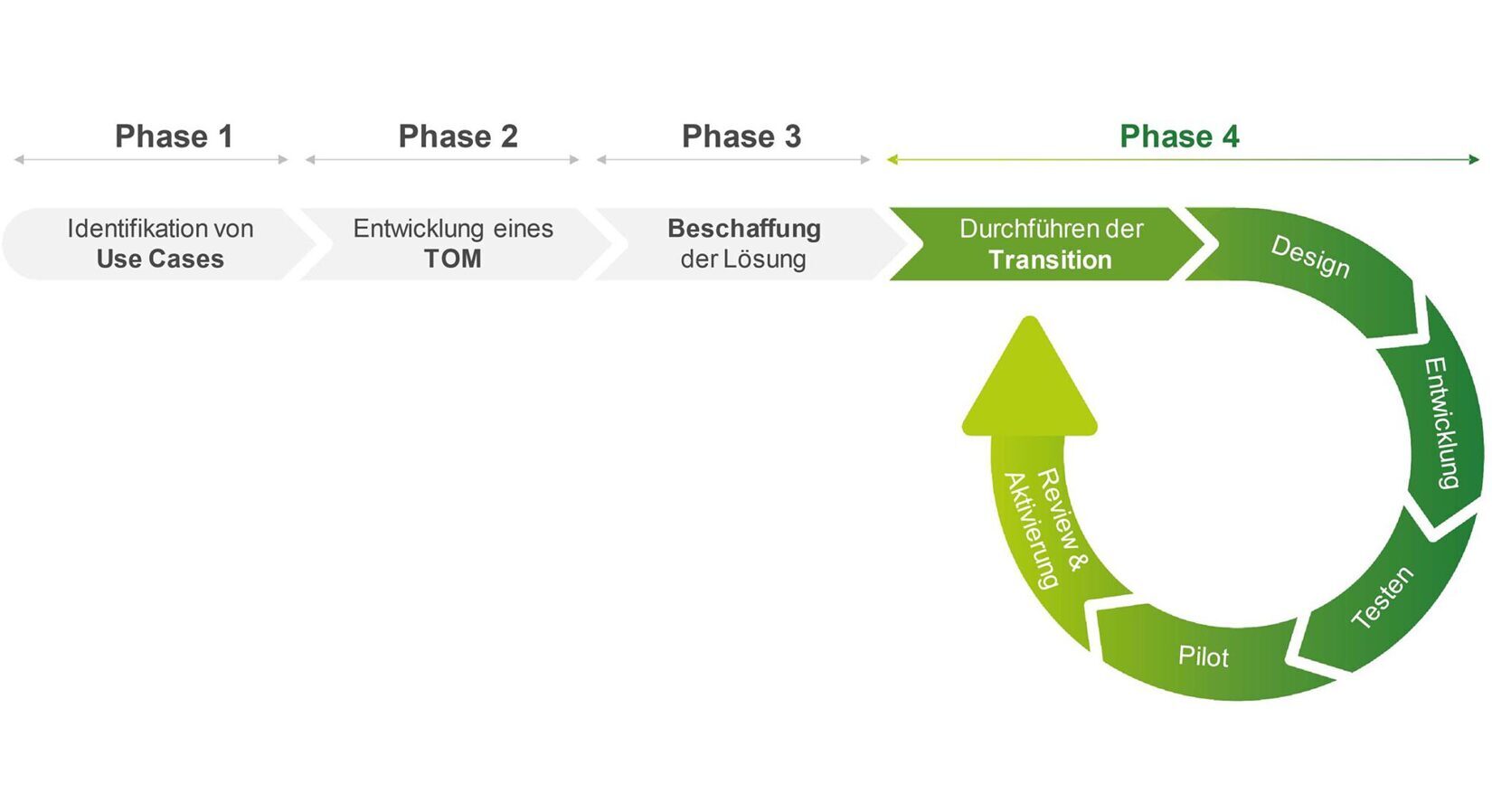
In order to maximize the potential of digital platforms, especially their use in business departments, there is a tension between adhering to existing best practices from classic application development and the needs of business users.

A simplified model is used here for the general procedure for introducing a digital platform, which focuses in particular on the organizational aspects of the introduction.
- Identification of use cases
The first step is therefore to identify the aspect of the use case to be implemented. A categorization of the use case provides the framework and scope of the organizational changes in the company implementing the solution.
- Development of a TOM
Since the focus here is on the introduction of digital platforms for use directly in the business departments, changes to the existing operating model and the associated platform management (including their responsibilities) in particular need to be redefined. Depending on the type of digital platform, the management of the platform can be shifted from people with technical skills to people with more specialist skills. This is particularly the case for low-code or process platforms.
- Procurement of the solution
When procuring the solution, the Unique Selling Proposition (USP) and the revenue model, which form criteria of the Strategic Fit, are particularly relevant. Depending on which USP (ecosystem / suite, best-in-class, niche, industry) or which revenue model (freemium, open source, licenses) is selected, the vendor/integrator model can be derived from this.
Supporting procurement, conducting a proof-of-concept (PoC) can help gather insights up front and more clearly define the requirements for the solution.
- Carrying out the transition
With the execution of the transition, an introduction procedure is to be pursued, which provides for the transition into an agile procedure. After each cycle, a releasable increment is created, which can also be activated and played in the productive environment. It is crucial that the line of business is involved in the procedure as early as possible so that the empowerment of the employees is supported.
Digital Platforms | Part 3 - Enterprise Architecture
In the third part of the series, we look at architecture scenarios. In particular, we show how which platform types can ideally or typically be integrated into an architectural landscape.
Digital Platforms | Part 2 - Deployment and Product Overview
The paper focuses on the deployment of the right product for the specifically planned use cases. At the same time, it also provides an up-to-date and neutrally evaluated overview of the available product categories and products on the market.
Digital Platforms | Part 1 - Introduction
In the first part, "Introduction", the following questions are examined:
What are digital platforms? What features and core capabilities do they include? What decisions have to be made when using them and how does a generic IT architecture incorporate digital platforms?
News & Eraneos Insights
We have compiled reports on our projects, interesting facts from the various competence and customer areas as well as information about our company for you here.
